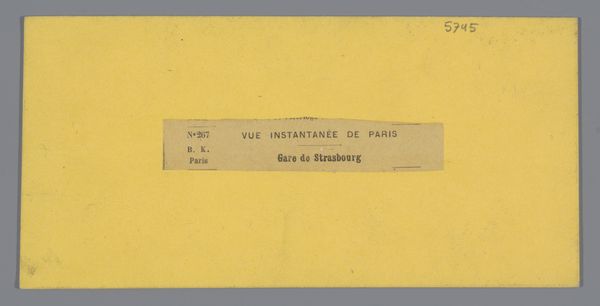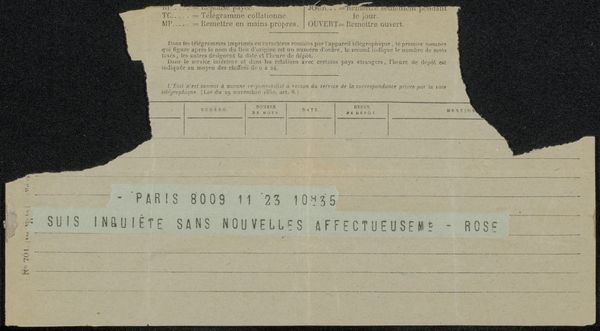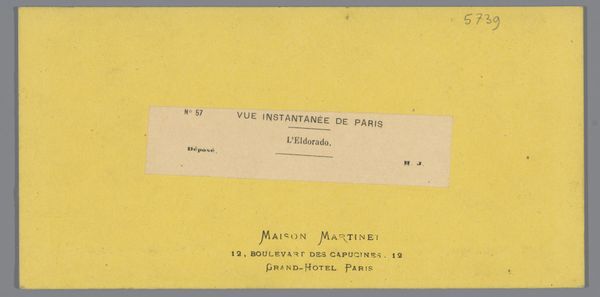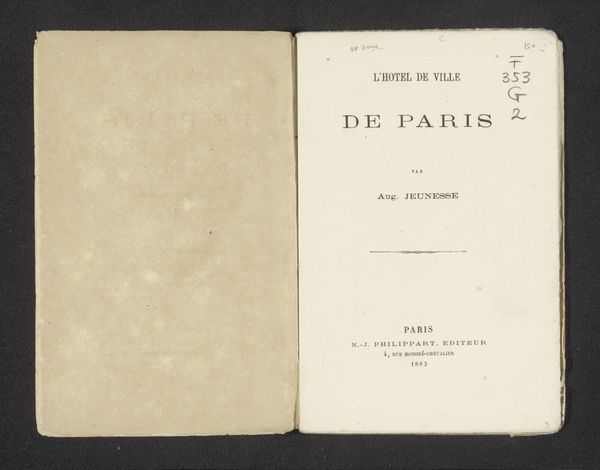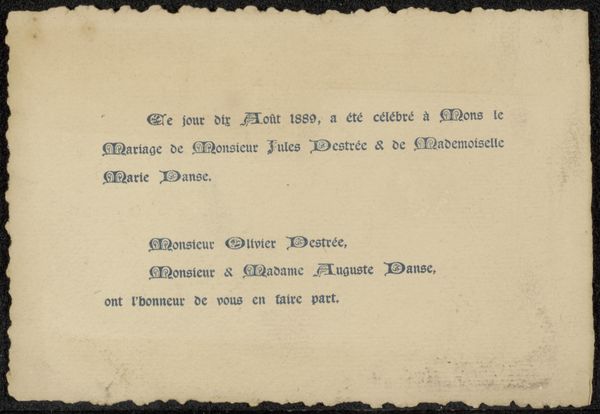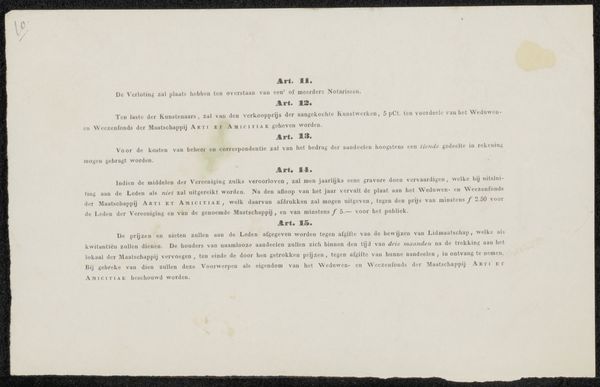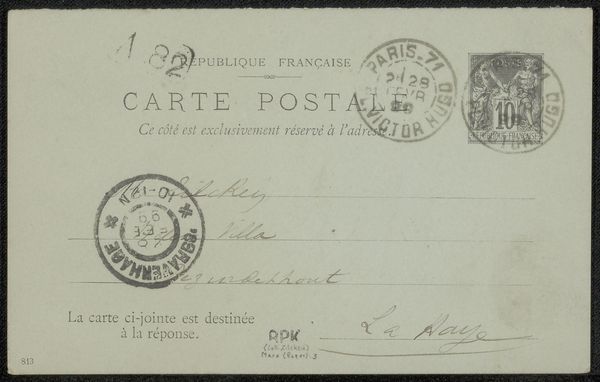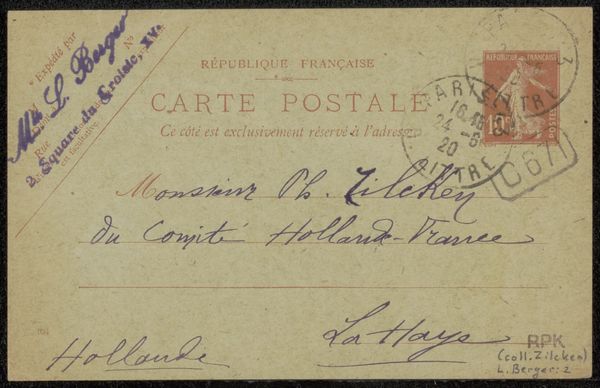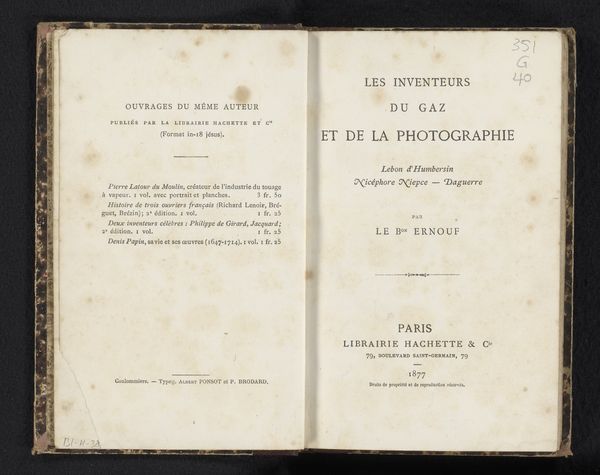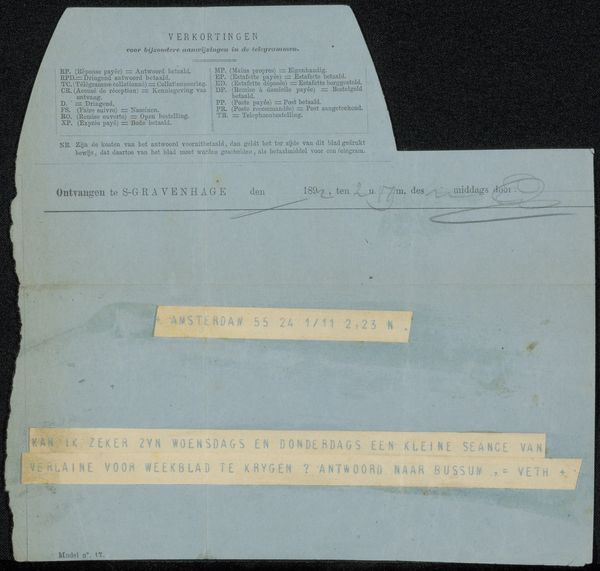
Gezicht op het feest Foire aux pains d’épices op het place du Trône in Parijs c. 1850 - 1880
0:00
0:00
Dimensions: height 86 mm, width 171 mm
Copyright: Rijks Museum: Open Domain
Curator: Looking at "Gezicht op het feest Foire aux pains d’épices op het place du Trône in Parijs" by Hippolyte Jouvin, likely created between 1850 and 1880, I immediately notice the photograph's wistful air. The indistinct figures hint at larger social forces at play. Editor: The term "Foire aux pains d’épices" already conjures such specific and joyful images – gingerbread, crowds, celebration – which is offset by this faded, almost melancholic impression we are getting. The blur of motion reminds me of fleeting memories. What kind of narratives are embedded in this place? Curator: This work captures a particular moment in the Place du Trône, now Place de la Nation, a space fraught with historical significance as the site of the guillotine during the French Revolution. So it sets up this rather stark contradiction: leisure, celebration, set against a history of state violence. Editor: Interesting. Thinking of the blurred figures, are there recurring symbols or archetypes connected to such festivals that might tell us about shared cultural experiences or anxieties of that era? What sort of behavior might be anticipated and perhaps even tolerated at such fairs? Curator: We could definitely delve into that, as that location acted as both the center stage of state-sanctioned executions and also, through events such as these, it evolved into an important cultural ground in Parisian life. Editor: The very impermanence of photography underscores the theme of transition. You have the juxtaposition of an implied transience versus solid, definable buildings. What of the light and shadows—how do these influence emotional affect and convey information? Curator: Romanticism really does prevail here; the focus isn't the sharp architectural detail of a cityscape, instead we get a glimpse into communal spirit, mass gathering as spectacle... that hints at freedom of expression and yet also at the possibility for crowd control. The soft tones and blurred subjects speak to Romanticism, don't they? A sentimental or nostalgic remembrance. Editor: I see your point about Romanticism. Thinking about what survives—traces of photographic prints, as well as symbolic cues—reveals how cultural memory can both persist and transform across generations. Curator: Exactly. I find that the piece embodies larger political anxieties tied to the representation of collectivity. What do you think? Editor: Well, on my end, I find this image to be a rather telling statement on shared celebration—both joyful and ephemeral in essence.
Comments
No comments
Be the first to comment and join the conversation on the ultimate creative platform.
